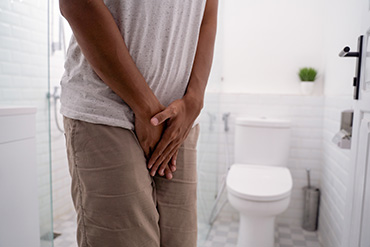Urinary incontinence means a person leaks urine by accident. While it may happen to anyone, urinary incontinence is more common in older people, especially women.
It is estimated that approximately 10 to 20 million people (10-35% of the U.S. population) are suffering from urinary incontinence. Nearly 50 percent of the institutionalized elderly are incontinent.
The estimated cost of diagnosis and treatment of this group is $15 billion per year. Though these numbers are staggering, about half of incontinent patients do not alert their physician or family members of their problem. Unfortunately, most of these individuals assume nothing can be done for incontinence or feel that leakage is a normal part of aging.
Urinary incontinence is defined as the involuntary loss of urine from the bladder. It is important to remember that not all incontinence is the same. There are several types of incontinence:

- Stress incontinence – SUI is the involuntary loss of urine from the bladder with increased intra-abdominal pressure, such as coughing, sneezing, or activities such as bending or standing from a sitting position. It is usually the result of loss of pelvic support and/or sphincter tone in the female or radical prostate surgery in the male. The patient usually notices the loss of urine when the activity is taking place. There are non-surgical treatment options such as Kegel exercises and/or biofeedback, and surgical options such as collagen injection, pubovaginal sling, or the placement of an artificial urinary sphincter.
- Urge incontinence – UI is the involuntary loss of urine form the bladder as a result of an increase in bladder tone or bladder irritation. Causes of UI include urinary tract infection, other inflammatory disease of the bladder, radiation injury or damage to the bladder, neurological conditions such as Parkinson’s disease, spinal cord injury, stroke, bladder cancer, and loss of bladder compliance (loss of the bladder’s ability to stretch). There are numerous medical, surgical, and physical therapy options to treat UI.
- Mixed incontinence – This is the condition of having both Stress and Urgency incontinence. This is a common condition in women.
- Overflow incontinence – This is a condition caused by an inability to empty the bladder, leading to a constantly full bladder. Causes include neurological conditions of the bladder, bladder prolapse, and obstruction of the normal flow of urine from the bladder (bladder outlet obstruction).
- Functional incontinence
Correct diagnosis of the type of incontinence is the first and most important step in developing an appropriate and effective treatment plan for incontinence.
This condition may occur due to a variety of different reasons, to include weak pelvic muscles or diabetes. Common causes include:
- Diminished skin thickness or drying in the vagina or urethra, particularly after menopause in women
- Inflamed prostate gland or prostate surgery in men
- Some medications
- Stool build-up of in the bowels
- Immobility
- Urinary tract infection
- Elevated calcium levels
You may feel ashamed about bladder control problems. Remember that it’s a medical problem and it’s not your fault. Millions of women have the same problem.
Don’t believe people who tell you that urine leakage is normal. It isn’t. Most of the time it can be improved. Your health care team can help you. Nearly everyone with a bladder control problem can be helped. Call your clinic and find out how.
Frequent symptoms of a bladder problem include:
- Burning with urination – the most common symptom of a urinary tract infection.
- Frequent urge to urinate without the ability to pass a desired amount of urine (frequency).
- Urgent need to urinate (urgency).
- Feeling of incompletely emptying of your bladder.
- Blood in the urine (hematuria). Your urine may look red, brown, or pink. Blood in the urine may occur after exercise, such as running or bicycling.
- Leaking urine (incontinence)
